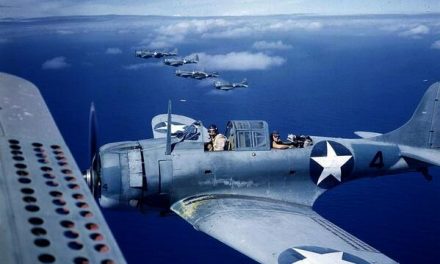
Mexican Air Force Aircrews
Published May 04, 2015
In the summer of 1945 airmen of the Mexican Air Force flew combat missions along with their American Allies. Mexico’s Escuadrón 201, The Aztec Eagles, equipped with Republic P-47D Thunderbolt fighter aircraft distinguished themselves in providing close air support to American ground units as well as long-range bombing strikes deep into Japanese held territory.
Mexico declared war on Japan, Germany and Italy on May 28, 1942, after having broken off diplomatic relations with those countries shortly after the Japanese attack on Pearl Harbor. The final provocation was the continued violation of Mexico’s territorial waters by German submarines and the sinking of two Mexican oil tankers.
The United States and Mexico entered into numerous wartime treaties and agreements which dramatically changed the diplomatic and social relations of the two countries. These included agreements for the unlimited reciprocal use of airfields and facilities as well as the establishment by the U.S. Army Air Forces (USAAF) of a number of bases in Mexico to train personnel. Basic pilot training was done at Guadalajara, Mexico after which the students moved to USAAF schools in the United States for advanced individual and unit training.
The President of Mexico, Manuel Avila Camacho, had accepted a U.S. invitation to provide Mexican Air Force units in the war against Japan. By July 1944 enough Mexican Air Force pilots and ground support personnel had been trained to form the first squadron for overseas deployment, the 201st Fighter Squadron (Escuadrón Aéreo de Pelea 201) consisting of 36 pilots and over 264 support personnel. This unit, along with a Mexican Expeditionary Air Force (Fuerza Aérea Expedicionaria Mexicana) headquarters, moved to the Philippine Islands in February of 1945.
Arriving in March of 1945 the Escuadrón 201 was attached to the U.S. 5th Air Force and the 58th Fighter Group which was based at Porac, Luzon. The 58th Fighter Group merged the Escuadrón 201 into combat operations and provided invaluable support to the new unit during its first combat missions. In early July 1945 the 58th Fighter Group deployed to Okinawa and the now fully operational Escuadrón 201 assumed full responsibility for air operations in its area. It provided not only close in ground support to the advancing U.S. 25th “Tropic Lightning” Division and Philippine Army units on Luzon but also strenuous and dangerous seven hour long-range fighter strikes on strategic Japanese targets on the island of Taiwan.
The attacks on Hiroshima and Nagasaki were quickly followed by Japan’s unconditional surrender. Had the war continued, other Mexican squadrons as well as replacement pilots and personnel would have followed the Escuadrón 201 footsteps for the invasion of Japan.
During its operational history the Escuadrón 201 had flown 795 combat sorties, had accumulated nearly 2,000 hours of combat flying, and had sadly lost seven pilots. At the end of the war the Escuadrón 201 was awarded the Philippine Presidential Unit Citation, individual decorations and awards from the United States, and, the most treasured award, the Mexican Far East Service Medal (Servicio en el Lejano Oriente). The Escuadrón 201 remains the only military unit in the history of Mexico to engage in combat outside of its national borders.





Recent Comments